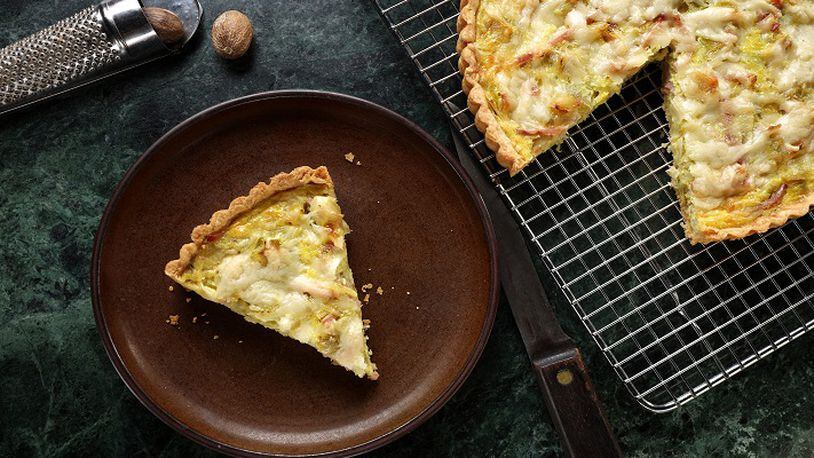If you have leftovers, refrigerate them wrapped in parchment paper, which allows them to breathe. I turn these treasures into satisfying quiches, or I use them to top a luscious onion soup or fill an omelet. Grate hard cheeses over pasta dishes or soups. I like combining 1 pound of rigatoni (cooked according to package directions) with 1 head of steamed broccoli florets and stalks cut into 1/2-inch pieces, with 8 ounces of Brie (with rind), cut into 1-inch pieces, with salt and pepper. Stir until the cheese melts and top with 1/2 cup toasted walnuts.
Cooking with cheese takes a little know-how, and given the price of good cheeses, you’ll want to be well-prepared. Here are a few tips that will have you making delicious gooey cheese-based dishes:
— Remove any blue or green mold from semi-hard or hard cheeses by trimming 1/4 to 1/2 inch of the mold away. The rest is fine to use. Even cheese that has become dry and hard is good to use — just grate it. All non-edible rinds such as wax should be removed before cooking.
— It’s important to remove a sauce from the heat before adding the cheese. Heating cheese too quickly can cause it to form lumps.
— Cooking a cheesy casserole at too high a temperature may curdle your sauce, so keep it at 375º or below. If you want to brown the top, place briefly under the broiler.
— Save the rind of Parmigiano-Reggiano cheese to toss it into soups and sauces to add savory flavor. When cooked, discard the rind.
———
ZUCCA’S BUCATINI CACIO E PEPE
This recipe is adapted from a pasta dish served at Zucca Restaurant in Coral Gables, Fla., where they are celebrating their first anniversary.
The black pepper in this dish makes this pasta ideal for Italy’s most important grape variety: Sangiovese. Poggio al Tufo Rompicollo 2014 ($12.99) combines 60 percent Sangiovese with 40 percent Cabernet Sauvignon to deliver chocolate, berry and walnut characteristics (along with soft tannins and full body).
Cacio e Pepe (cheese and pepper) is a flavorful Roman pasta recipe that is suddenly very trendy in the US — perhaps, because it is so easy, fast, and made with only six ingredients. Buy good quality blocks of cheese and grate them yourself. Use a pepper grinder as opposed to ground pepper. The starchy pasta water binds ingredients together and helps thicken the sauce.
1 pound of bucatini pasta
1 tablespoon freshly ground black pepper, plus extra for garnish
4 tablespoons of olive oil
1 tablespoon of butter
1 cup freshly grated Parmesan cheese
1 cup freshly grated Pecorino Romano cheese, plus extra for garnish
Kosher salt
1. Bring a large pot of salted water to boil over high heat. Add the bucatini pasta and cook until al dente (times vary, check instructions on box).
2. Set aside 1 1/4 cups of pasta water, then drain pasta.
3. In a large skillet, toast the ground pepper with olive oil over medium heat until fragrant.
4. Add in the drained pasta, 1 cup of the reserved pasta water, and the grated Parmesan and Pecorino Romano cheese. Toss to coat the pasta well and season with salt.
5. Add the remaining 1/4 cup of reserved pasta water and a tablespoon of butter, continue tossing to create an even cream sauce.
6. Transfer to a large bowl and sprinkle with ground pepper and Pecorino Romano cheese.
Serves 4-5
About the Author
